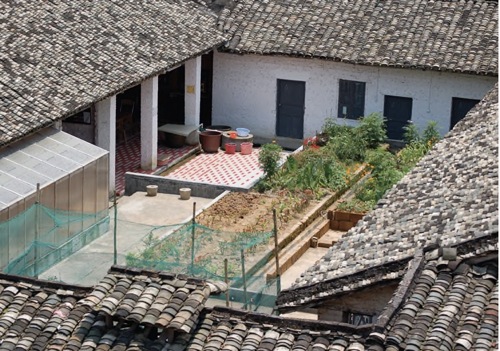Thanks to contemporary media, architectural news and knowledge is more accessible than ever: every day, design and architectural journals both online and off deliver fresh news about iconic buildings, luxury museums, beautiful villas, eco-friendly houses, and much more. But these stories often reflect the designers’ personal perspectives and concentrate on a limited portion of the world.
Even though the Internet globally connects us, much of the world still escapes our view. High-profile building activities receive media attention while examples of community-based work, vernacular and traditional building techniques, informal settlements, and disaster reconstruction receive little attention, even though they’re part of our everyday reality and are often the result of collaborative innovation. As a result of this poor documentation, indigenous building knowledge is fragmented, forgotten and even lost in our ever-shifting digital world.
Is there a way to collect this scattered local architectural knowledge and make it accessible and valuable to everyone? And with this available knowledge, what can we learn from each other about collaboration and sustainable development? These questions inspired the creation of Architecture In Development, a non-profit organization that aims to reconnect sustainable development to architecture.
About Architecture In Development
To achieve this mission, we built a community-based, user-generated platform to unite local and global building knowledge in one place, and connect community initiatives to experts from around the world.

Stories of architectural projects are told with respect to the local society, culture, tradition and environments. These stories describe architecture as a collective act by explaining how a slum village was formed by the social structure of urban immigrants, or how building activities were initiated and performed together by both designers and users. This collective knowledge has the potential to emonstrate new ways to communicate architectural knowledge, and become a foundation on which practitioners of architecture can collaborate on local and global sustainable development.
Some standout projects from our database:
[image_1_big]
A sustainable village development that merges education and agricultural production, gradually guiding the populace towards economic self-sufficiency.
Nueva Esperanza School, Ecuador
[image_2_big]
In a remote village in Ecuador, the Nueva Esperanza School is the first built with the needs of the community in mind, better facilitating education efforts and preserving the unique identity of the village by utilizing local materials and human resources.
[image_3_big]
In this abandoned skyscraper, thousands of people have found shelter and developed their own self-sustainable micro-economy.
[image_4_big]
A research project that demonstrates how spontaneous development, usually thought of as being endemic to impoverished areas, can serves as a rich source of insights on human-building interaction.
Nqibikan Village Reconstruction, Indonesia
[image_5_big]
The Nqibikan Village Reconstruction empowered residents to rebuild their own physical shelters and re-establish a community of resilience post-earthquake.
Below are five other projects from our database still awaiting authors:
[image_6_big]
A fishing village built up on stilts above Lagos Lagoon, an area typically associated with slums.
Collège Mixte Le Bon Berger, Haiti
[image_7_big]
A post-disaster reconstruction made possible by the collaboration of Architecture For Humanity, The Stiller Foundation and Students Rebuild.
Warehouse for Agricultural Products, Mali
[image_8_big]
The Warehouse for Agricultural Products is a community development that uses a participatory process to sustain the village’s agricultural activities.
[image_9_big]
A new social meeting place that also turns trash into fuel, improving villagers’ quality of life and health while creating jobs for younger residents.
[image_10_big]
A vertical squatters’ city expropriated and evacuated in 2004, where thousands of people found shelter for decades .
Want to contribute? Every project entry can have up to five authors (one primary author and four co-authors,) so you’re welcome to contribute a piece of knowledge to the page without having to edit the whole page. This makes for a more collaborative approach to sharing architectural knowledge. Register for an account and add or contribute to a project at www.a-i-d.org.









